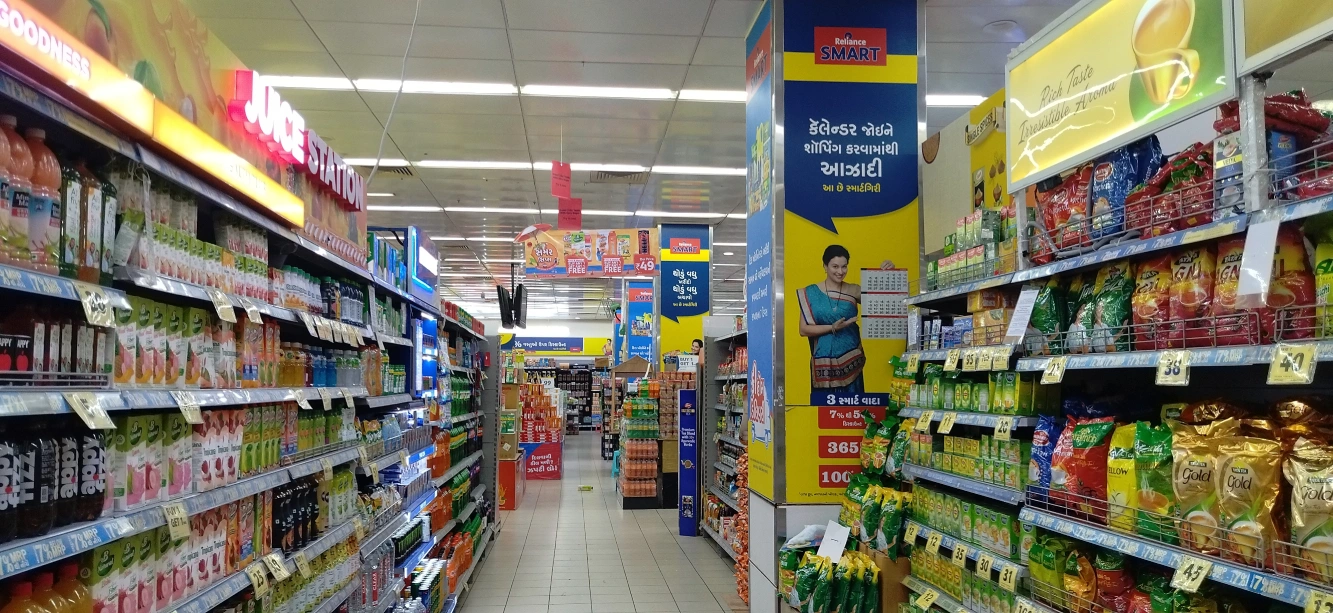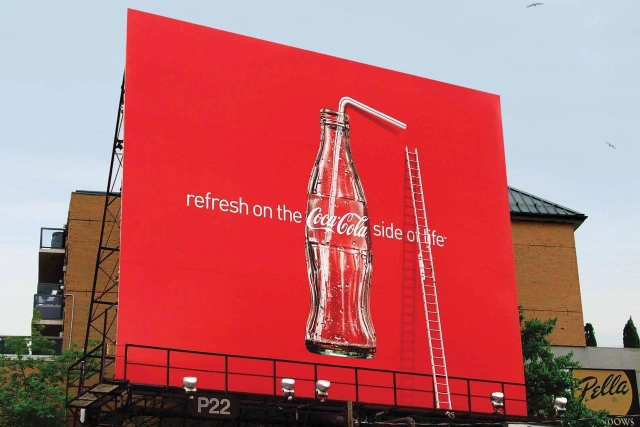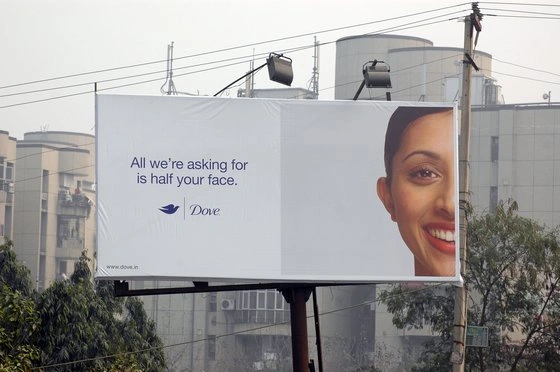
If there’s one industry where visibility can make or break a brand, it’s FMCG. Short for Fast-Moving Consumer Goods, FMCG includes everyday items like packaged foods, beverages, personal care products and cleaning supplies – basically, the things we all buy frequently and with minimal thought.
Think shampoos, biscuits, toothpastes, soft drinks and instant noodles; you see them in shops, on billboards and increasingly, on your Instagram feed. And that’s the challenge: how does a brand stand out when the consumer is flooded with options and ads at every turn?
This is where advertising becomes both an art and a battlefield. In a cluttered space, being present isn’t enough; you need to be unforgettable. For FMCG brands, it’s no longer about who shouts the loudest but who connects the fastest. A smart, results-driven advertising agency can help make that difference.
Table Of Contents
- The FMCG Clutter: Why It’s Loud Out There
- Shifting Budgets, Sharper Strategies
- From Prime-Time to Scroll-Time: How Media Habits Have Changed
- Digital isn’t optional – it’s the Mainstage.
- What Makes FMCG Ads Stick in Memory
- Brands “Being Seen In The Crowd” Examples
- Final Thoughts: Less Noise, More Meaning
The FMCG Clutter: Why It’s Loud Out There

Walk into any supermarket aisle and you’ll feel it instantly, the chaos. Rows upon rows of shampoos, biscuits, fizzy drinks, detergents and chocolates, all screaming for attention. The FMCG (Fast-Moving Consumer Goods) sector is one of the most crowded and competitive markets out there.
Every brand is fighting for the same thing: a few seconds of consumer attention, both on the shelf and online. But with endless options, limited shelf space and newer players entering every day, standing out has become harder than ever.
What’s made it even tougher?
- Brand loyalty is on the decline. Consumers are more experimental, driven by reviews, influencer opinions or a flashy reel they saw five minutes ago.
- Pricing wars are common. A slight change in MRP or offer can sway someone to switch, even if they’ve used the same brand for years.
- Digital distractions are everywhere. While your product sits patiently on the shelf, your audience is scrolling through a feed full of offers, memes and content from five other competing brands.
- Sustainability and ethics matter more now. Gen Z and millennials don’t just want good products; they want responsible ones.
So, just being there is no longer enough. Being visible isn’t the same as being remembered. And in this high-noise environment, that’s where emotional storytelling and especially nostalgia marketing can cut through.
Whether it’s reviving an old packaging style, bringing back a discontinued favourite or launching a campaign that reminds people of “how things used to be, ”the goal is simple: make people feel something.
Shifting Budgets, Sharper Strategies
FMCG advertising has come a long way from the days of catchy jingles on Doordarshan and coupons tucked inside morning newspapers. Today, ad spends are steadily migrating from traditional mass media to digital-first, performance-driven platforms. But this shift isn’t just about keeping up with trends; it’s a direct response to where the audience is actually spending time.
People are no longer glued to TV screens; they’re on Instagram, YouTube, WhatsApp and now even shopping directly via social media. They’re swiping, skipping and making buying decisions in seconds. To catch them in that fleeting moment, brands need more than reach; they need relevance.
While some legacy brands still favour the reach and familiarity of TV and radio, a new generation of D2C players is showing what can be done with leaner budgets and sharper thinking. From cheeky meme campaigns to influencer shoutouts and moment marketing, they’re building buzz and conversions through agility and creativity.
Behind many of these wins is the quiet power of a smart advertising agency, one that understands not just platforms but people. It’s no longer enough to run a campaign. The goal is to move the audience, to make them smile, remember or even hit that “add to cart” button on impulse.
From Prime-Time to Scroll-Time: How Media Habits Have Changed
Not too long ago, an FMCG brand’s biggest win was a prime-time TV commercial or a double-spread newspaper ad. That was the gold standard: high reach, strong recall and a sure-shot way to enter households. But in today’s attention economy, those rules have changed dramatically.
Now, the real battleground is digital and it fits perfectly with the fast, transactional nature of FMCG. Consumers are discovering new snack brands on Instagram Reels, checking toothpaste reviews on YouTube and impulse-ordering shampoo while binge-watching cricket on OTT platforms. Purchase journeys that once stretched over days now unfold in seconds.
This doesn’t mean TV and print are irrelevant, especially in rural or tier-2 markets where they still hold sway. But their dominance is clearly on the decline. Digital platforms offer something traditional formats can’t: speed, flexibility and precision. That’s crucial in FMCG, where product life cycles are short, competition is high and buyer attention spans are even shorter.
Smart FMCG marketers are moving towards hybrid media strategies. They still use the credibility of traditional channels but pair it with digital targeting muscle. Programmatic ads help reach specific user groups, while regional content in local languages connects emotionally. Whether you’re selling instant noodles or detergent, the message has to land quickly and meaningfully.
Digital isn’t optional – it’s the Mainstage.
Let’s be honest: if your FMCG brand isn’t present online, it’s practically invisible. Digital is no longer just an add-on; it’s the starting point. It’s where product searches begin, where reviews shape perceptions and where feedback travels at the speed of a screenshot.
Today’s consumers expect more than polished TV commercials. They want relatable content, authentic storytelling and fast responses. Whether it’s a funny reel, a tweet about stock availability or a creator showing your product in use, digital is where the brand experience actually unfolds.
With tools like geo-targeting, brands can talk to a college student in Pune differently from a homemaker in Kochi, without missing a beat. Social listening helps brands tap into real conversations and trends, sometimes even before they go viral. And personalised creatives allow campaigns to feel less like ads and more like conversations.
The best-performing campaigns today are those that feel native to the platform. Think: a meme that sparks nostalgia, a short-form video that demos a snack in under 10 seconds or a relatable caption that earns a double tap. It’s not about shouting louder; it’s about speaking smarter.
What sets digital apart is its measurability. You can test, learn, tweak and relaunch, all in a matter of days. That level of agility just isn’t possible with traditional formats. For FMCG brands trying to keep up with ever-changing tastes, real-time feedback isn’t just a bonus; it’s a lifeline.
What Makes FMCG Ads Stick in Memory
In a cluttered market, it’s often not about what you say, but how you say it. The most successful FMCG ads today are:
- Emotionally tuned: Nostalgia, humour or even relatability can spark an instant connection.
- Culturally relevant: Whether it’s festive packaging or tapping into regional slang, localised content performs far better.
- Visually thumb-stopping: Bright colours, smart animation or satisfying visuals can all drive attention within seconds.
- User-powered: UGC and customer testimonials often hold more sway than even high-budget celebrity campaigns.
Brands “Being Seen In The Crowd” Examples
Coca-Cola

Known for wide-reaching outdoor advertising, Coca-Cola utilises billboards and digital displays in high-traffic areas to maximise visibility and reinforce its iconic branding.
Procter & Gamble (P&G)
P&G’s brands like Ariel and Head & Shoulders frequently leverage innovative point-of-sale advertising and in-store displays to prompt impulse purchases and stay top-of-mind among shoppers.
Unilever

With brands like Dove and Surf, Unilever’s campaigns often use demographic targeting and distinctive outdoor creative, such as large digital billboards and bus shelter ads, to break through the advertising clutter.
Nestlé
Nestlé’s local-market approach utilises supermarket “6 sheet” billboards and customised merchandising to influence shoppers close to the point of purchase.
Müller Corner
Their eye-catching out-of-home (OOH) campaign bent the corner of the 48-sheet billboard to match product packaging, which was named by Kantar as a top creative OOH ad for its strong stopping power and distinctive visual cue.
KFC
Their “First Bite” campaign dramatised the moment of anticipation before eating, using both traditional and digital OOH to emotionally resonate with consumers and create a memorable link to the brand experience.
Heinz
A campaign cleverly associated everyday experiences (like swapping condiments) with the brand to achieve strong brand recall and resonate with a broad audience.
AXE
Used visually stunning, narrative-driven ads with celebrity endorsers and animation to target specific demographics and create buzz on social media.
Magic Spoon
This startup FMCG cereal brand used TikTok-native influencer campaigns to authentically connect with niche audiences, such as millennials and health-conscious shoppers, resulting in high engagement and millions of impressions.
Ferrero’s Kinder
Launched bilingual, QR-based sweepstakes incorporating WhatsApp for easy entry, incentivising purchases and gathering first-party data
Final Thoughts: Less Noise, More Meaning
FMCG advertising is a game of seconds. You don’t have minutes to explain, just a moment to connect. And in that moment, your brand has to be clear, consistent and compelling.
In a market where consumers are spoilt for choice and constantly chasing the next new thing, it’s not about who spends the most. It’s about who communicates smarter, faster and more meaningfully. That’s where strategic thinking meets sharp creative execution.
With the right creative vision and the right partners to bring it alive, your brand can rise above the clutter, not get lost in it. Whether it’s a nostalgic throwback, a viral reel or a packaging refresh that feels just right, the impact lies in the details.
And if you’re looking to craft campaigns that don’t just make noise but build real connections, collaborating with the best advertising agency in Ahmedabad can be a powerful first step. Because in the world of FMCG, being seen is good.
But being remembered? That’s the real win. The fmcg brand has been expanding a lot
FAQs
1. What is FMCG advertising?
It’s the promotion of fast-moving consumer goods like snacks, soaps and beverages to boost visibility and recall in a crowded market.
2. Why is it hard for FMCG brands to stand out?
The market is packed with similar products, so brands must grab attention quickly and creatively to stay memorable.
3. Has digital replaced traditional FMCG advertising?
No, but digital is now essential. It offers better targeting, faster results and higher engagement.
4. What works best for FMCG brands online?
Short videos, influencer content, regional campaigns and quick, engaging ads perform well across platforms.
5. How does packaging impact FMCG marketing?
Yes, packaging catches the eye and influences in-store decisions. Strong visual design boosts shelf appeal.



